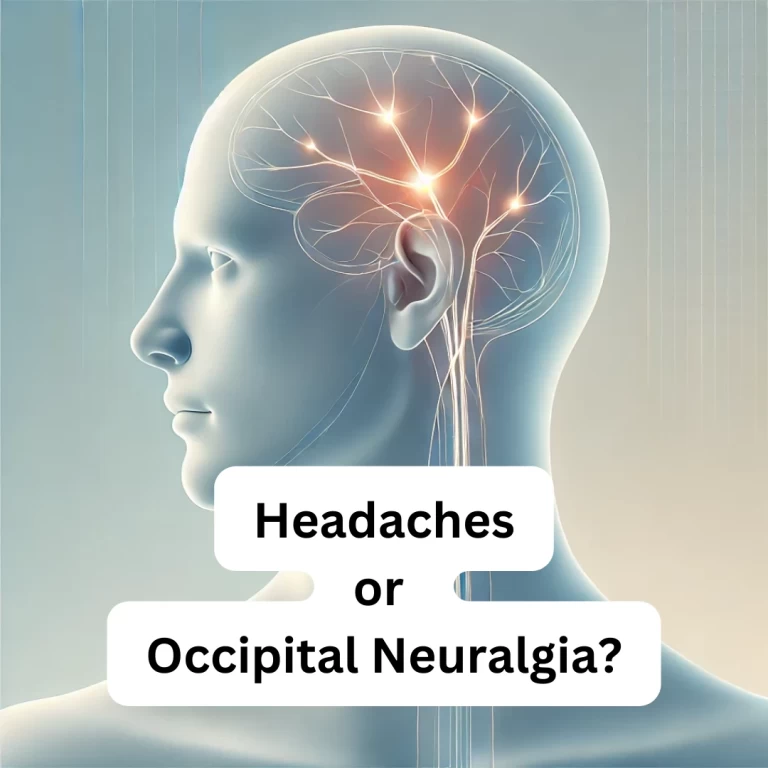Chiropractic Care for TMJ Pain: An Upper Cervical Perspective
Hi everyone, I'm Dr. Reis from Atlas Specific Chiropractic in Hiawatha, IA. As an upper cervical chiropractor, I've dedicated my practice to helping people find natural, non-invasive relief from chronic pain and misalignment issues. Today, I want to dive deep into a topic that's close to my heart—and unfortunately, close to the jaws of many of my patients: TMJ pain. If you've ever experienced that nagging jaw discomfort, clicking sounds when you chew, or even headaches stemming from your temporomandibular joint, you're not alone. In fact, temporomandibular joint disorder (TMJ disorder) affects millions of Americans, and I've seen firsthand how upper cervical chiropractic care can offer lasting TMJ pain relief.
By downloading the Digital Patient Chart mobile app you can better control your patient portal.
In this article, I'll share my perspective on chiropractic care for TMJ pain, focusing on the upper cervical approach. We'll explore what TMJ is, its causes, the crucial link between your neck and jaw, and how precise atlas adjustments can make a world of difference. By the end, you'll understand why upper cervical chiropractic is a game-changer for those seeking natural TMJ treatment without drugs or surgery. Let's get started—I'll keep it straightforward, evidence-based, and practical, just like my adjustments.
Understanding TMJ Disorder: More Than Just Jaw Pain
First things first: what exactly is TMJ disorder? TMJ stands for temporomandibular joint, which is the hinge connecting your jawbone to your skull. It's one of the most complex joints in your body, allowing you to talk, chew, yawn, and even express emotions through facial movements. When this joint becomes dysfunctional, it leads to temporomandibular joint disorder, often simply called TMJ or TMD (temporomandibular disorder).
Symptoms of TMJ pain can vary widely, but common ones include:
- Jaw pain or tenderness, especially around the joint area.
- Clicking, popping, or grating sounds when opening or closing your mouth.
- Difficulty chewing or pain while eating.
- Locking of the jaw, making it hard to open or close your mouth fully.
- Headaches, earaches, or even tinnitus (ringing in the ears).
- Facial pain that radiates to the neck, shoulders, or back.
- Teeth grinding (bruxism) or clenching, which often worsens at night.
From my experience at Atlas Specific Chiropractic, many patients come in thinking their jaw issues are isolated, but they're often surprised to learn how interconnected the body is. TMJ disorder isn't just a "jaw problem"—it can stem from misalignments elsewhere, particularly in the upper cervical spine. According to research from sources like the National Institutes of Health, up to 10-15% of adults experience TMJ symptoms at some point, with women being more affected than men. Stress, poor posture, injuries, and even dental work can trigger or exacerbate it.
If you're searching for "TMJ pain relief near me" or "natural treatment for temporomandibular joint disorder," you're in the right place. Upper cervical chiropractic offers a holistic approach that addresses the root cause, not just the symptoms.
Common Causes of TMJ Pain and Why They Matter
To effectively treat TMJ pain, we need to understand its causes. In my practice, I've identified several key factors that contribute to temporomandibular joint issues:
1. Misalignment in the Jaw or Spine: Trauma from accidents, whiplash, or even poor ergonomics at work can throw off the alignment of your jaw or neck vertebrae. This is where upper cervical subluxation comes into play—a misalignment in the top two vertebrae (atlas and axis) can disrupt nerve signals and muscle balance, leading to jaw tension.
2. Stress and Muscle Tension: Chronic stress often leads to teeth grinding or clenching, which overworks the TMJ. I've treated many patients whose TMJ pain flared up during high-stress periods, and chiropractic adjustments helped by reducing overall nervous system irritation.
3. Poor Posture: In our digital age, "tech neck" is a real issue. Slouching over screens strains the cervical spine, which in turn affects jaw positioning. Upper cervical chiropractic care focuses on correcting these postural imbalances for long-term relief.
4. Injuries or Arthritis: Past sports injuries, car accidents, or degenerative conditions like arthritis can inflame the TMJ. Non-invasive chiropractic techniques, such as soft tissue therapy combined with adjustments, can reduce inflammation without invasive procedures.
5. Dental Factors: Misaligned bites, orthodontics, or missing teeth can unevenly distribute forces on the jaw. While I collaborate with dentists when needed, upper cervical care often complements dental treatments by ensuring spinal alignment supports proper jaw function.
Recognizing these causes is crucial because traditional treatments like painkillers, mouth guards, or surgery only mask the problem. At Atlas Specific Chiropractic, we aim for root-cause resolution through upper cervical chiropractic adjustments, promoting natural healing and preventing recurrence.
The Vital Connection: Upper Cervical Spine and TMJ Function
Now, let's talk about the star of the show in upper cervical chiropractic: the atlas vertebra (C1) and axis (C2). These top two bones in your neck support your skull and protect the brainstem, a critical hub for nerve signals throughout the body. When there's an upper cervical misalignment—often called a subluxation—it can create a chain reaction affecting the jaw.
How does this happen? The atlas vertebra acts like a "foundation" for your head. If it's even slightly off (we're talking millimeters), it can tilt your head, forcing your jaw to compensate. This leads to uneven pressure on the temporomandibular joint, muscle imbalances, and inflammation. Studies, such as those published in the Journal of Manipulative and Physiological Therapeutics, show a strong link between cervical spine issues and TMJ disorders. For instance, one study found that patients with neck misalignments were more likely to experience jaw pain.
In my clinic, I use advanced imaging like digital X-rays to precisely measure atlas misalignment. This upper cervical perspective is what sets my practice apart—unlike general chiropractic, we focus exclusively on this area for targeted TMJ pain relief. Patients often report not just reduced jaw pain but also improved posture, fewer headaches, and better overall well-being.
How Upper Cervical Chiropractic Care Provides TMJ Pain Relief
At Atlas Specific Chiropractic, our approach to chiropractic care for TMJ pain is gentle, precise, and evidence-based. We don't do the twisting or cracking you might associate with traditional adjustments. Instead, we use specialized techniques like the Atlas Orthogonal method, which involves a painless instrument to realign the atlas vertebra.
Here's how it works step by step:
1. Initial Assessment: When you visit, I'll conduct a thorough history and exam, including posture analysis and neurological tests. We'll discuss your TMJ symptoms and any related issues like neck pain or headaches.
2. Precision Imaging: Using state-of-the-art X-rays, we identify exact misalignments in the upper cervical spine. This ensures your treatment is customized—no guesswork.
3. Gentle Atlas Adjustment: The core of our treatment is the atlas adjustment. This non-invasive procedure corrects the C1 vertebra, restoring proper nerve flow and reducing pressure on the TMJ. Many patients feel immediate relief, though full benefits often build over sessions.
Research supports this: A 2022 study in the International Journal of Environmental Research and Public Health found that upper cervical mobilization significantly improved mouth opening and reduced pain in TMJ patients. Another review in the Journal of Oral Rehabilitation highlighted how chiropractic care addresses the neuromuscular aspects of TMD.
In my experience, 80-90% of TMJ patients see notable improvement within 4-6 weeks. It's rewarding to hear stories like one patient who came in with chronic jaw locking and left able to eat comfortably again.
Real-Life Benefits and Patient Stories from Atlas Specific Chiropractic
The benefits of upper cervical chiropractic for TMJ extend beyond pain relief. By correcting misalignments, we promote:
- Improved Jaw Mobility: Easier chewing and speaking without clicking.
- Reduced Associated Symptoms: Fewer headaches, ear pain, and even better sleep by addressing teeth grinding.
- Holistic Health Gains: Enhanced nervous system function leads to better posture, reduced stress, and overall vitality.
- Long-Term Prevention: Unlike temporary fixes, alignments help prevent future flares.
Integrating Lifestyle Tips for Optimal TMJ Management
While chiropractic adjustments are powerful, I always encourage patients to support their treatment at home. Here are some tips I've shared over the years:
- Stress Management: Practice mindfulness or yoga to reduce clenching. Biofeedback can help too.
- Posture Awareness: Use ergonomic setups and take breaks from screens to avoid neck strain.
- Diet and Habits: Opt for soft foods during flares and avoid gum chewing. Heat or cold packs can provide quick TMJ pain relief.
- Exercise Routine: Gentle jaw exercises, like controlled opening and closing, strengthen muscles without overstrain.
- Collaborative Care: If needed, I'll refer you to a dentist for bite analysis or an ENT for related issues.
Combining these with regular upper cervical check-ups ensures sustained results. Remember, prevention is key—don't wait for pain to worsen.
Why Choose Atlas Specific Chiropractic for Your TMJ Journey?
As we wrap up, I hope this upper cervical perspective on chiropractic care for TMJ pain has shed light on a natural path to relief. At Atlas Specific Chiropractic, we're not just about adjustments; we're about empowering you to live pain-free. If you're dealing with temporomandibular joint disorder, jaw pain, or related symptoms, I invite you to schedule a consultation. Let's identify any upper cervical misalignment and get you on the road to recovery.
Visit our website at iowaatlasspecific.com or call our Hiawatha office today. Whether you're local in Eastern Iowa or searching for "upper cervical chiropractor near me," I'm here to help. Remember, your body has an incredible ability to heal when aligned properly—let's unlock that potential together.








Leave a comment